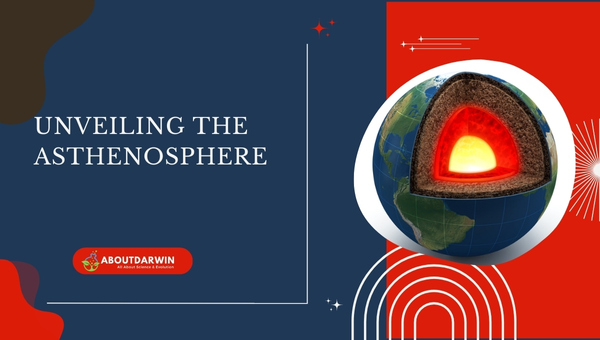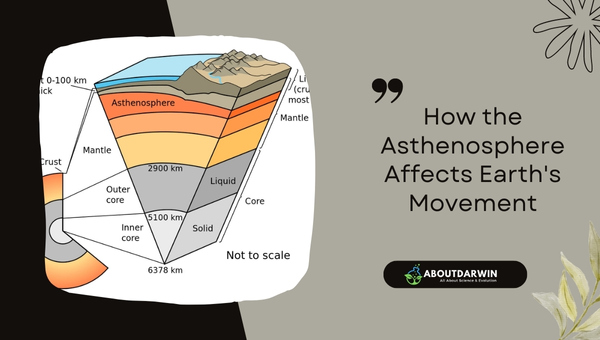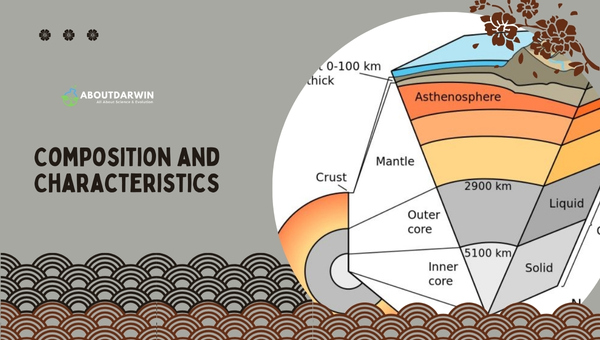Physical Address
304 North Cardinal St.
Dorchester Center, MA 02124
The Earth’s interior is a complex and dynamic system, with the asthenosphere playing a pivotal role in tectonic activity. Situated beneath the lithosphere, this semi-fluid layer extends from about 100 to 700 kilometers below the surface and is crucial for the movement of tectonic plates.
Asthenosphere facts reveal that its unique properties, including low viscosity and high temperature, allow for the convection currents that drive plate tectonics. This fascinating layer not only influences geological phenomena like earthquakes and volcanic eruptions but also shapes the very landscape of our planet.
What secrets lie beneath our feet? How does this molten layer contribute to the Earth’s ever-changing surface? Join us as we explore the remarkable characteristics and significance of the asthenosphere in our planet’s geological narrative.
Contents
When diving into the depths of our planet, I find it fascinating to explore the various layers that makeup Earth’s structure. One of these intriguing layers, situated beneath the Earth’s crust, is called the asthenosphere.
In this section, I’ll introduce you to astounding facts about the asthenosphere and unveil its mysteries.

The asthenosphere is a layer within the Earth’s upper mantle, sandwiched between the lithosphere and the lower mantle. What sets it apart from other layers is its semi-solid state. You see, this layer isn’t entirely solid or completely liquid.
The asthenosphere behaves more like a viscous, slow-moving substance and plays a significant role in plate tectonics.
Now, in terms of depth, the asthenosphere is located approximately 80 to 200 kilometers below the Earth’s surface. It extends to a depth of about 670 kilometers.
Here’s a helpful table showing its range:
| Layer | Depth |
|---|---|
| Earth’s Surface | 0 km |
| Upper Asthenosphere Boundary | ~80-200 km |
| Lower Asthenosphere Boundary | ~670 km |
The temperature in the asthenosphere varies quite a bit. At its upper boundary, temperatures may be as low as 1300°C (2372°F), while at its lower boundary, temperatures can soar to a scorching 2200°C (3992°F). These high temperatures cause rock in the asthenosphere to partially melt, which explains its flowing nature.
The asthenosphere plays a crucial part in plate tectonics. The lithosphere above it consists of the Earth’s crust and the uppermost part of the upper mantle. This layer is split into several huge slabs called tectonic plates.
The semi-fluid asthenosphere lubricates their movement, allowing them to slide above it. This is the primary driving force behind the Earth’s various geological events, such as earthquakes and volcanic eruptions.
A glimpse into the significance of the asthenosphere:
Understanding the asthenosphere helps us comprehend the intricate processes beneath our feet. From its unique properties to its involvement in shaping the Earth’s landscape, this hidden layer is essential to our planet’s geology.
Its unique properties allow it to act as a lubricant for tectonic plates, facilitating their movement and contributing to geological phenomena such as earthquakes and volcanic eruptions.
To understand the critical role of the asthenosphere in Earth’s movement, it’s crucial to grasp how it interacts with the lithosphere. The asthenosphere, located beneath the lithosphere, is known for its vicious, partially molten properties that enable the movement of tectonic plates above it.

The asthenosphere impacts Earth’s movement in several ways:
It’s essential to note that the asthenosphere’s effects are not limited to just Earth’s movement: it also plays a part in the formation and evolution of our planet’s surface. For instance:
The asthenosphere’s role in Earth’s movement offers valuable insights into various geological processes, natural disasters, and the formation of striking features on our planet’s surface. It further underscores the importance of this layer in shaping the world as we know it.
We all know that the Earth is composed of various layers, and one of these layers is the asthenosphere. But what exactly is it made of, and what are its characteristics? In this section, I’ll shed light on the composition and features of the asthenosphere.

The asthenosphere is a layer of the Earth’s mantle situated below the lithosphere, composed of the crust and the uppermost part of the mantle. This layer is predominantly solid but behaves semi-fluidly due to its higher temperature and pressure.
This significant temperature difference is due to the heat generated by radioactive decay and the heat from the Earth’s core. The pressure within the asthenosphere also increases with depth, contributing to its semi-fluid behavior.
To better understand the composition and characteristics of the asthenosphere, let’s examine some specific properties:
Also Read: 4 Steps of the Nitrogen Cycle: Importance, Impact
| Feature | Lithosphere | Asthenosphere |
|---|---|---|
| Composition | Composed of the crust and upper mantle; mostly solid | Primarily solid but contains a small amount of melt (less than 1%) |
| Temperature | Ranges from 100°C to 1300°C (212°F to 2372°F) | Ranges from approximately 1300°C to 1700°C (2372°F to 3092°F) |
| Mechanical Strength | Rigid and mechanically strong | Ductile and mechanically weak |
| Viscosity | More viscous than asthenosphere | Less viscous, allowing for flow |
| Heat Transfer Method | Heat flows by conduction | Heat flows by convection |
| Location | Above the asthenosphere | Below the lithosphere |
| Thickness | Approximately 40 to 300 km (25-186 miles) | Approximately 40 to 700 km (25-435 miles) |
| Role in Plate Tectonics | Forms tectonic plates that can break and move | Allows for the movement of tectonic plates due to its ductility |
The asthenosphere, though less known than Earth’s crust or core, plays a vital role in geology. Its viscoelastic nature—behaving as both solid and liquid—enables tectonic plate movement, driving processes like earthquakes, volcanoes, and continental drift.
This layer, composed of hot, partially molten rock with temperatures of 1300–1400°C, lies about 80–200 kilometers beneath the surface. Advances in understanding its depth and composition have improved geological models and event predictions.
The asthenosphere also holds promise for geothermal energy production, utilizing its heat for renewable electricity. Additionally, the extreme conditions in this layer form unique minerals essential to various industries.
Studying the asthenosphere provides crucial insights into Earth’s structure, energy potential, and resources.
The asthenosphere, a semi-fluid layer beneath the Earth’s lithosphere, is vital for the movement of tectonic plates. Its unique properties, including high temperatures ranging from 1300°C to 2200°C, allow it to behave like a viscous fluid, facilitating geological phenomena such as earthquakes and volcanic eruptions.
As we continue to uncover asthenosphere facts, the potential for geothermal energy and the formation of unique minerals highlights its significance in both geology and renewable energy.
What other secrets lie beneath our feet? The deeper we explore, the more we discover about our planet’s dynamic nature.